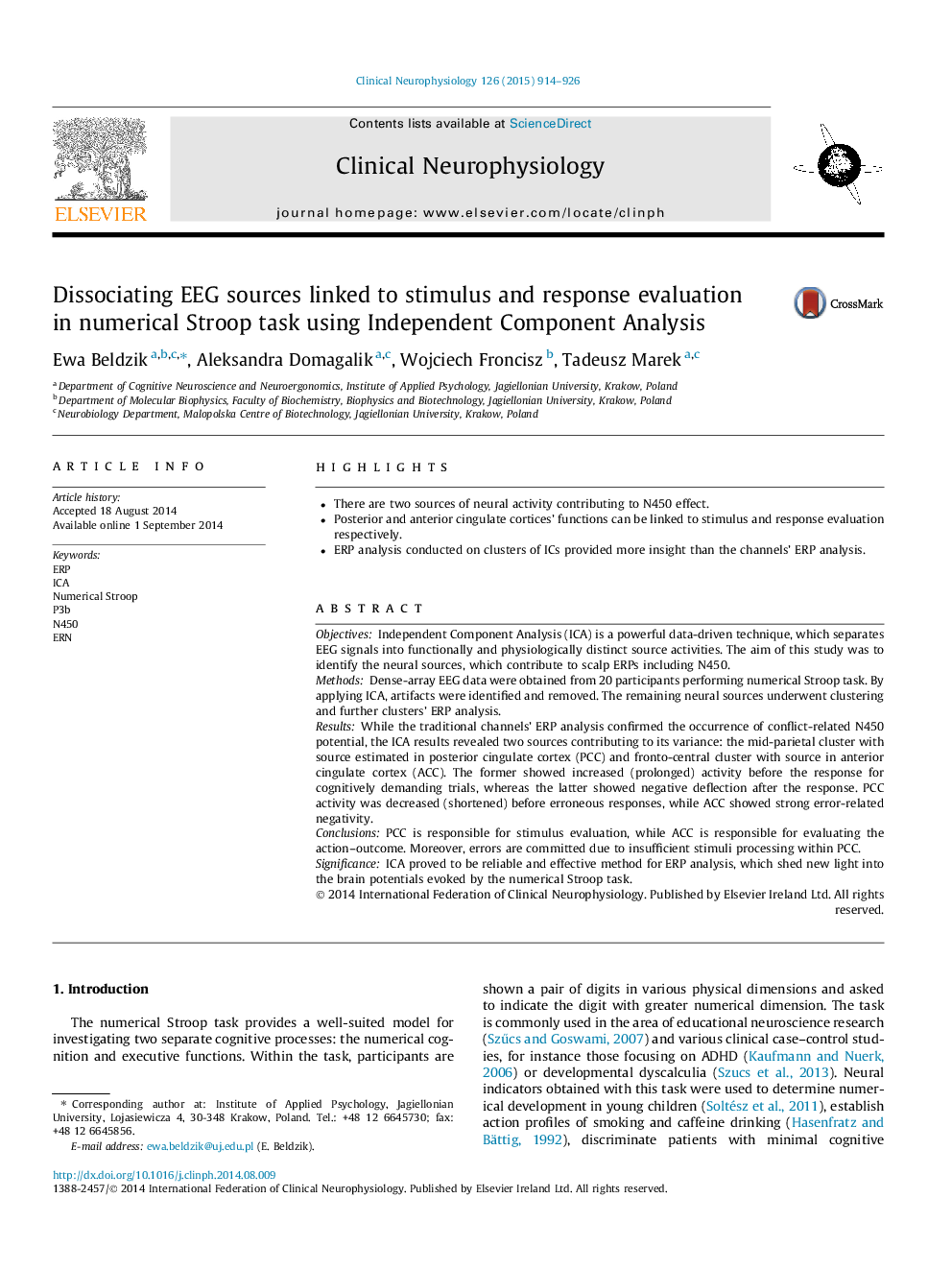| Article ID | Journal | Published Year | Pages | File Type |
|---|---|---|---|---|
| 3042784 | Clinical Neurophysiology | 2015 | 13 Pages |
•There are two sources of neural activity contributing to N450 effect.•Posterior and anterior cingulate cortices’ functions can be linked to stimulus and response evaluation respectively.•ERP analysis conducted on clusters of ICs provided more insight than the channels’ ERP analysis.
ObjectivesIndependent Component Analysis (ICA) is a powerful data-driven technique, which separates EEG signals into functionally and physiologically distinct source activities. The aim of this study was to identify the neural sources, which contribute to scalp ERPs including N450.MethodsDense-array EEG data were obtained from 20 participants performing numerical Stroop task. By applying ICA, artifacts were identified and removed. The remaining neural sources underwent clustering and further clusters’ ERP analysis.ResultsWhile the traditional channels’ ERP analysis confirmed the occurrence of conflict-related N450 potential, the ICA results revealed two sources contributing to its variance: the mid-parietal cluster with source estimated in posterior cingulate cortex (PCC) and fronto-central cluster with source in anterior cingulate cortex (ACC). The former showed increased (prolonged) activity before the response for cognitively demanding trials, whereas the latter showed negative deflection after the response. PCC activity was decreased (shortened) before erroneous responses, while ACC showed strong error-related negativity.ConclusionsPCC is responsible for stimulus evaluation, while ACC is responsible for evaluating the action–outcome. Moreover, errors are committed due to insufficient stimuli processing within PCC.SignificanceICA proved to be reliable and effective method for ERP analysis, which shed new light into the brain potentials evoked by the numerical Stroop task.
